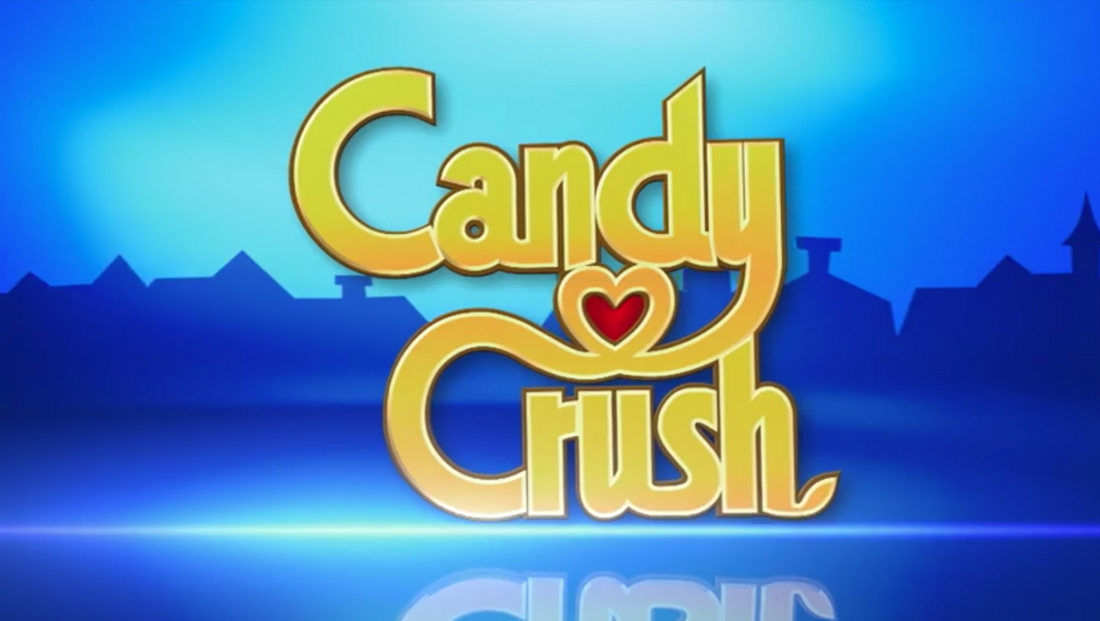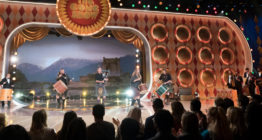‘Candy Crush’ production design allows popular game to ‘break out’ from small screens

Subscribe to NCS for the latest news, project case studies and product announcements in broadcast technology, creative design and engineering delivered to your inbox.
Other areas of the studio include the “leaders’ lounge,” a semi-enclosed raised throne-like area backed with walls that feature two tones of layered sculptural walls with integrated accent lighting that suggest a gooey sugary topping.

The lounge is also equipped with large “1st” dimensional lettering mounted on a metallic frame and backed with circular candy “cushions.”

Another seating area features a U-shaped bench with candy themed cushions, while a “2nd” place lounge is also available.
Both of these seating areas back up against the audience risers, which allows the studio audience to look down on the action from above. Additional audience members stand in the second level of the archway structure.
The design also features lollipop shaped “buzzers” on pod-style units that are rolled out for specific gameplay.
Given the large scale of both boards and the entire studio, the show makes generous use of wide, sweeping shots as well as overhead cameras and integrated and point-of-view camera feeds.
The show also makes heavy use of music and sound effects inspired by the game and brand, while the game’s familiar booming voice, reminiscent of arcade games, is mixed in as well. David Vanacore composed the show’s theme music with additional music from Bleeding Fingers.


The graphics of the show, from Midnight Sherpa and Gunslinger Digital, are heavily influenced by the app as well, with the Cadice font used in the app interface used for everything from lower thirds to scoreboards to game titles — and even the aforementioned dimensional lettering above the leaders’ lounge.
The bubbly, rounded shapes of Cadice’s letterforms conjure images of vintage bubble gum or ice cream parlor logos.


The pastel color palette allows the colorfulness of the game that users have come to know and love shine through while yielding to the brighter colors used on the game boards.
Many of the graphics are rendered in rounded rectangular shapes or in small “signs” that peek up from the bottom of the screen.
Other graphics elements include a simplified outline of a city or castle, which appears as both a background element and on-set in the lower archways of the arena.
Subscribe to NCS for the latest news, project case studies and product announcements in broadcast technology, creative design and engineering delivered to your inbox.





tags
Candy Crush, CBS, entertainment, entertainment set design, game show, Mario Lopez, production design
categories
Broadcast Design, Game Show Set Design, Heroes, Set Design, TV Show Production Design